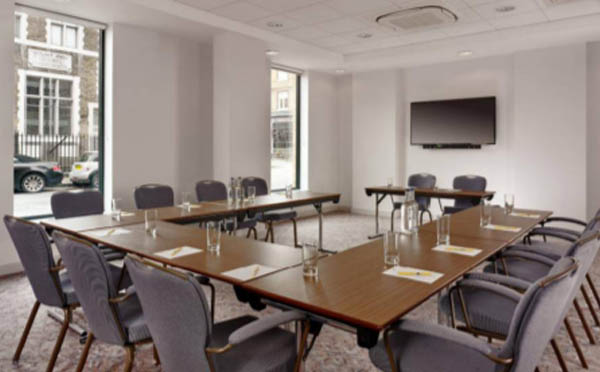Top 12 Tips For Trainers From 30 Years Of Experience

For this article we asked Mark Williams, a leadership trainer with the award winning MTD Training Group for his top 12 tips and golden nuggets of information for you trainers out there. Mark has over 30 years of learning and development experience so we thought it would be wise to tap into his knowledge and wisdom…
It was only recently that I realised I have been training for over 30 years. Has it flown by? Well, yes and no.
Yes, in the sense that I can’t believe I’m old enough to have been in this industry for that long! And no, in the sense that so much has changed and developed over that time, that I can’t believe I have crammed so much into such a relatively short stretch of time.
Moore’s Law is alive and well in our industry, with ideas and learning initiatives being enhanced and developed so quickly that if we are still training in the same way as we did just a couple of years ago, we may find that people have moved on and enjoy learning in a much more collaborative way than before.
Here are twelve tips that I’d like to share that have successfully kept me going and will help you to initiate new ideas:
Don’t teach people ‘stuff’: Teach them how to think
We have often considered training to be developed by questions like ‘What do I want to teach them?’ and ‘What do they need to learn?’
I’ve often come across HR Managers and others who have said ‘My team need to learn this’ and ‘We need a training course on that’.
I’ve seen that when you just train people on ‘stuff’ (technical skills, soft skills, etc.) they learn the fundamentals of how to do the job or carry out the task, but that’s about all. After
the course, they know how to be more assertive, or can follow that sales process, or understand that management model.
But what they can’t do is ‘think’. By that, I mean answering questions like ‘How can I think through this process so I can apply it if I am hit by that challenge?’ Or ‘What would I do if someone came up with a similar but different objection?’
Einstein said that ‘the same level of thinking that got us to today’s problems will not create tomorrow’s solutions’.
We need to help people to think through scenarios, develop case studies and be more creative in finding solutions in ways they hadn’t done before. That way they aren’t learning by rote, but are initiating their own learning and thinking processes.
Training should have an impact on business results
Our training should encourage people to see the end results, rather than just create the journey. This means highlighting the applicability of the learning, so people can see what they will achieve by carrying out the learning in the real world.
If a person is able to think through the repercussions of applying the ideas discussed, they will be able to reverse-engineer and determine what they need to focus on from the new-found knowledge so it can be put into practical use immediately and in the future
It’s not about me: it’s about them
I often hear trainers say ‘this is what I want to train them or teach them’ and they put the emphasis on what they know, sometimes turning sessions into self-indulgent periods of ‘look what I know’.
Instead, it should be developed and focussed on how the learners learn and what they need to takle away to apply in real world situations.
When I discuss with clients what their needs are, I often discuss the type of people we will be working with and see if we can adapt anything to how they interact. This makes it so applicable, appropriate and relevant to the teams we are working with and is seen in the final results we achieve with them.
People need to be in the right ‘state’ to learn and thinks
Have you ever run a programme where one or more persons have turned up late? What kind of state are they in? Ready to learn? Ready to contribute?
State management is key to allowing people to take in new ideas. Setting the right state for learning involves having the right environment, making it a relaxed setting, showing people they can contribute without it being embarrassing or frightening for them.
Many studies have shown that when people are relaxed, they are open to learning, so reduce any stress factors and recognise the right state your learners need to be in before even attempting to create a learning session.
We learn best when it’s fun
Many education theorists (Dulay & Burt, 1977; Krashen, 1982) have proposed that students retain more of what they learn when it is associated with strong positive emotion. Cognitive psychology studies provide clinical evidence that stress, boredom, confusion, low motivation, and anxiety can individually, and more profoundly in combination, interfere with learning (Christianson, 1992).
These and many more studies show that adding a fun element is much more conducive to retention of learning than we may have realised. It doesn’t mean you have to be a clown or tell jokes; you can introduce fun sessions with quick quizzes that the learners have developed, or quick motivators that get people out of their seats and walking around.
Introducing an element of fun is good for you too, as it breaks up longer learning sessions into much more manageable chunks.
Evaluation is much deeper than happy sheets
Sometimes, we only measure our training effectiveness with happy sheets, those reactionary responses we ask people to complete at the end of a programme.
Even the Kirkpatrick model only allows up to four levels of measurement: Reaction, learning, behaviour, Impact.
But we find that there’s a higher level that MTD have been advocating for some time. That fifth level is ‘sustainability’.
I’ve learned that when the training can be referred to further down the line as contributing to the successful results they have obtained, it rises in its significance and can contribute to further ideas for learning and development in the future, as they have seen the benefits of the overall training.
The training course is one small step for man
The course itself should not be seen as the be-all-and-end-all for people development. MTD initiated follow ups years ago, where course attendees could avail themselves of our sales or management academies, free coaching opportunities, free on-line courses, sales and leadership DNA processes, blogs, newsletters and a host of other support that help people apply the training and learning initiatives.
What I’ve learned is the training neds to be complemented with other things that enhance the learning processes; without them, people soon forget what they have learned and go back to their own way of thinking.
All learning has to be supported by management
Many times on our training programmes, people have said ‘I like the concepts but management would never agree to it’ or ‘I wish our management team were here to hear this’.
If any learning interactions aren’t given the complete support of upper management, it can be seen as an sprinkling of the pixie-dust in the direction of the learners by upper management and not as a change initiative that needs their input and backing.
I have found that when learning programmes get the full support and backing of higher management, the chances of success are exponentially improved.
Learning should focus on being creative and taking initiatives, not learning ‘best practices’
Best practices come and go over time. So, we need to develop the skillsets of creative thinking and the taking of initiatives, which by their very nature outlast the concepts of best practice.
If you do teach best practices, make sure they are concurrent with the culture of the company you are working with and help the learners to expand their awareness by looking at the application through creative thinking and innovative initiatives.
Tell absorbing, interesting, creative, pertinent stories
Data-driven information builds people’s logical and analytical thinking skills; stories create emotional connections, stir their imagination and touch their emotions. Stories engage and motivate, increasing your chances of putting ideas across in compelling ways.
Introduce stories at strategic parts of your training initiatives. I’ve found that it perks up the interest of the delegates because now they are using their imagination and creating emotional connections to what could be considered dry material.
AI and VR will be our friends and not to be feared
Yes, the future is here and there’s nothing to be afraid of, just ideas to be embraced and implemented. Millennials and Generation Z are used to using ideas like gamification, which develops a highly-engaging and useful learning experience.
Learn all you can about how AI and VR will influence your industry and the effect it will have on the learnings carried out by your delegates. You will find people will be more engaged and attach the idea of fun and anticipation to their learning experience.
We need to always be looking at creating new training concepts or we will be left behind
One of the key words we see being banded around for the future of work is ‘agility’.
This concept of flexibility and rapid change also applies to our training industry, and if we don’t embrace these concepts we will be left behind, as people demand more interaction, more pertinent learning initiatives and more futuristic learning concepts.
We need to lead the changes in the way we coach, support and develop our learners, matching their learning styles to the new initiatives that are being brought out almost daily.
By doing so, we will attract more people to our programmes as they see the value of learning in a new style and not being subjected to long programmes that don’t dovetail with their learning natures
Feedo enables you to run effective training needs analysis campaigns for your people. You can select from self-assessment, 180 degree feedback and 360 degree feedback options. You’ll receive comprehensive reporting which will allow you to create the learning and development opportunities that your people require.





